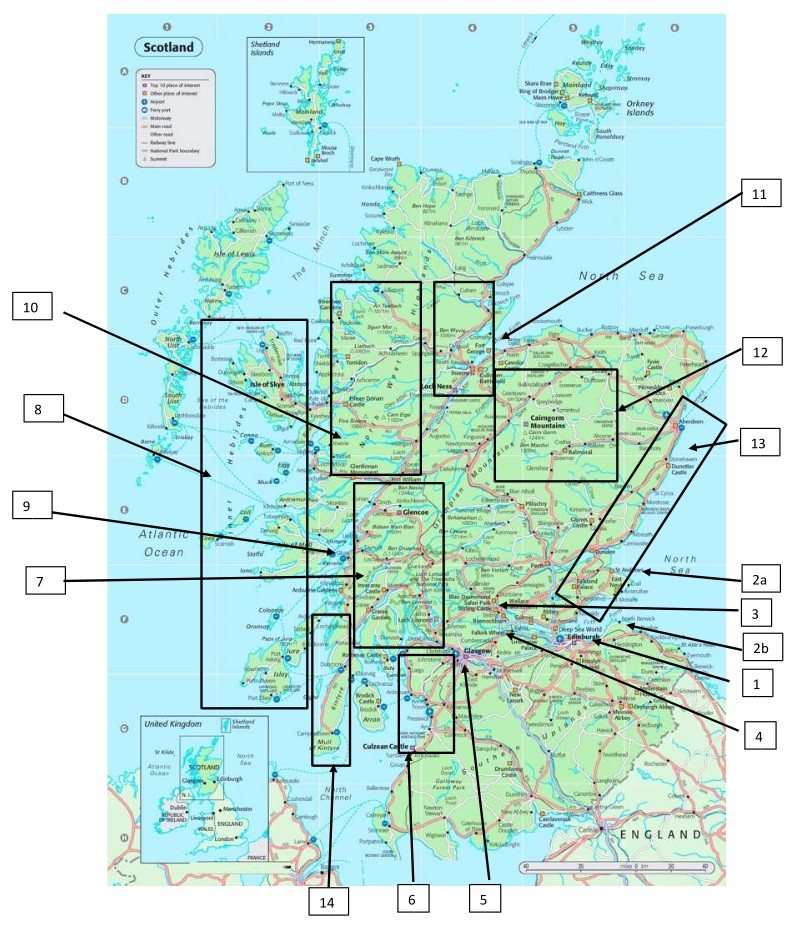Iain Kelly
I am glad you are thinking of visiting my country of birth and formative years and after many requests by friends from around the world asking what to see in Scotland, I pulled these personal thoughts together. Scotland with a population of 5.5 million covering an area of 30,000 sq. miles has somewhat accurately been described as “half the area of North Carolina, half the population, and four times the arrogance.”
This document originated in a time long, long ago (i.e. pre-covid) so things will have changed. But as the intent is only to give some thoughts to guide your inevitable internet search of TripAdvisor ratings, Yelp eateries or Lonely Planet itineraries hopefully it will provide some insights. I have not covered all of Scotland but am happy to talk about anything else you may have an interest in. I still know enough people to follow up with on my many areas of ignorance.
I passed my initial thoughts around Scottish friends and family who edited unmercifully. I would be grateful if you would add to this document by dropping me a note after your trip of what appealed to you and what did not, whether they are included below or not. I would be appreciative of a photo or two of your favorites for future editions.
Ceud Mile Failte (one hundred thousand welcomes in Gaelic).
Iain (919 280 7647); iaindkelly@outlook.com
General Overview
Depending on your interests there are various parts of Scotland you may like to visit. Scotland has brilliant scenery and is a great place to walk the hills, rock climb, mountain bike, kayak, camp, or sail. Scotland has a very liberal Outdoor Access Code to allow you do these things. Check it out (Access Code). There are also castles, quaint towns, historical cities, standing stones, pubs, and of course whisky distilleries. Gin tasting has also appeared as a national pastime in recent years to help destroy our remaining liver cells. Top of my list of must-do things are Scotland’s capital, Edinburgh, and the North West Highlands and Islands. Unfortunately, they are across the country from one another; so happily, you will get to see more of the country if you choose to visit both.
Take good shoes and rain wear. If you are going walking in the country or mountains, be sure to take insect repellent and I would also recommend an insect net for covering your head as (highland) midges, a species of no-see-ums, can be really annoying particularly near water, around dusk. The weather can change suddenly in the Scottish hills so be prepared.
For getting around you may not need a car all the time. If you are in Edinburgh for a few days one can be more of a hindrance. Trains are good between the major population centers but, if you do choose to experience the scenery and remoteness a car beats a tour bus if you do not mind driving on the left and occasionally on single track roads. Distances are deceptive as 50 miles can take a couple of hours or 45 minutes depending on the road, not just the traffic.
Edinburgh (1)
Edinburgh, Scotland’s capital, has been called the Athens of the North. From some angles the castle rock that dominates the town does look like the Acropolis. The town was also a major hub in philosophical thinking. During the Scottish Enlightenment, in the late 1700s, economist Adam Smith and philosopher David Hume were key luminaries. Following one of his visits to the city Benjamin Franklin stated that “you could stand at the Mercat Cross (by St. Giles Cathedral on the Royal Mile) and, in half an hour, shake fifty men of genius by the hand”. The town has no end of sites worth visiting– the old (Castle, St Giles Cathedral, National Gallery, Holyrood Palace, the newer (Sir Walter) Scott Monument etc. and the new including The Scottish Parliament, legendary for its cost overrun. It is a great city to walk around.

Edinburgh consists of a Very Old Town (pre/early 17th Century) an Old Town (up by the Castle) built on top of the Very Old Town and a New Town (late 18th Century) north of Princes Street, the main shopping street. You get a really good sense of the city when you visit the Castle area, but I think the Mary King’s Close tour (Mary King Close) is worth it. The tour is a bit hokey, but you get a great impression of the Very Old Town. I like to contrast the old Town with a drink or a meal in the New Town at the Dome (https://www.thedomeedinburgh.com/ ) to get a feel for the opulence of the New Town. Robert Adam, another major Scottish Enlightenment force, was architect of several of the buildings in the late 1700s.
Whisky shops abound in Edinburgh along with lots of places to drink it. Rose Street, the Grassmarket, and the Royal mile all have an abundance of pubs. The Scotch Whisky Experience (The Royal Mile, 354 Castlehill) up near the Castle lacks a bit of atmosphere, but you can buy a bottle of almost any whisky here and buy a wee dram to taste in their bar before purchasing. Cadenhead Whisky Shop (172 Canongate) further down the Royal Mile is a great old whisky shop.
The Edinburgh Military Tattoo (https://www.edintattoo.co.uk/tickets) and Edinburgh Festival have run together for years and the Edinburgh Fringe (Fringe on Twitter) has grown up around them. Do not miss the Tattoo (tickets go on sale in December) or associated revelries if you decide to go in August. The city becomes one big arts and entertainment center for the best part of the month. Book accommodation early!
If you want to shake off an excess of usquabae (whisky) take a walk up Arthur’s Seat for a great view of the city.
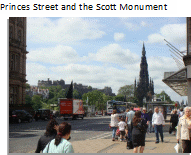
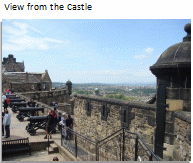
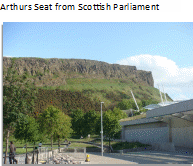
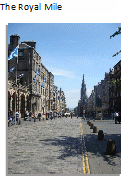
St. Andrews (2a) and North Berwick (2b)
St. Andrews makes a good day trip to escape the hustle and bustle of Edinburgh. Drive across the Queen Elizabeth Road Bridge and note the iconic, older Forth Rail and Forth Road Bridges.

The town has significant historical sites including the ruins of the 12th Century Cathedral and is home to the 3rd oldest university in the English-speaking world where, in more recent times, Prince William and Kate Middleton met. It is also reputed to have some good wee golf courses. If you walk along the beach towards the Royal and Ancient Clubhouse you cannot help but remember the opening scenes from Chariots of Fire with Vangelis’ soundtrack urging you to kick off your shoes and run through the waves.

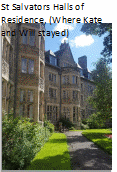
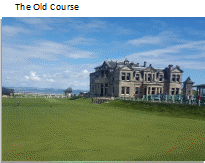
In my first draft I excluded North Berwick, the seaside retreat of my extended family for many years, deciding to focus on its more famous cousin St. Andrews. Bowing to family pressure I include it here. North Berwick is a simple train ride from Edinburgh. It has two excellent golf courses the West, a links course, and the East a parkland course but, which, unusually for this type of course, along the Firth of Forth. It also has a Par 3 course that we always called the Childrens’ course as we were dropped off in the morning and picked up at night. For the ornithologists take a boat to the Bass Rock. For those of you not in search of birds or birdies, walk up Berwick Law, wander the town and above all eat, al fresco, at the Lobster Shack.
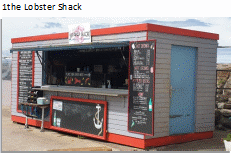
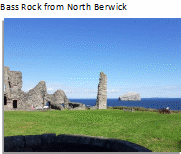
Stirling and the Trossachs (3)
If you are traveling from Edinburgh to Glasgow, it is less than an hour by train or car, but it is worth taking some of the slower roads with numerous attractions along the way. The area around Stirling could be part of this detour or an overnight stay on its own if you wanted to spend some time walking in the Loch Lomond and Trossachs National Park. A really good introduction to Scottish Hill walking is Ben A‘an (Ben A’an (Walkhighlands)). It has the feel of the higher mountains in the highlands but is significantly less strenuous. Stirling Castle is almost as impressive as Edinburgh castle. This is William Wallace (Braveheart) country. Climb the Wallace Monument and see Scotland’s history laid out before you: The Battle of Stirling Bridge (1297) and the more famous Battle of Bannockburn (1314), where Robert the Bruce routed the much larger English Army.
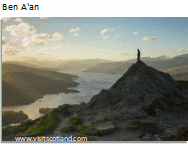

Falkirk (4)
Falkirk is on a more direct route from Edinburgh to Glasgow and has a couple of unusual attractions, the Falkirk Wheel is a recently constructed (2002), ingenious boat lift, linking two of Scotland’s old canals that previously transported goods by horse drawn barges. The Kelpies are 100 ft high horse like heads of water spirits. They were intended to move mechanically but cost overruns, a common feature in Scottish undertakings (big dreams, small wallets), prevented it.
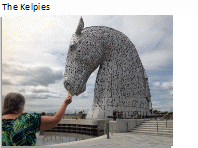
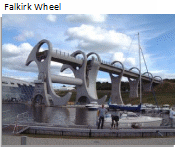
Glasgow (5)
It is always difficult to recommend the sites of your hometown. As a recent Glaswegian singer/songwriter, Gerry Cinnamon, wrote “the mayhem of Glasgow is buried deep in my blood”. I was born here, went to high school and university here and got married here. That said, I lived most of my Scottish life in the adjoining town of Clydebank. The town built big ships including the Queen Mary, the Queen Elizabeth and the QE2 as well as having the largest Singer Sewing Machine Factory in Europe.
Glasgow is Scotland’s largest city and is somewhat harder to walk around than Edinburgh. Much as I try to avoid packaged tourism, I would recommend getting your bearings using the city Hop-On, Hop-Off bus tour. Walk around the City Centre (sic): George Square, Sauchiehall Street, Argyll Street etc. where the architecture funded by the mid-18th century tobacco lords still dominates the city. Take the bus to Merchant City, Glasgow Cathedral and Glasgow Green etc. but make sure to visit the West End around the University (4th oldest in the English-speaking world and home to Lord Kelvin, Joseph Black, Adam Smith, David Livingstone, Gerard Butler, but no royals). Stroll through Kelvingrove Park and visit Kelvingrove Art Gallery and Museum. The most famous item in the museum is Christ of Saint John of the Cross painted by Salvador Dali in 1951. The cost of £8,500 was consider outrageous at the time and inappropriate for a city like Glasgow struggling economically in post-war Britain. This time the investment was worth it. The painting is now valued in excess of £60 million.
Take the short walk from museum and sample Tantrum Doughnuts (tantrum doughnuts). Full disclosure, my nephew Iain Baillie and his wife are the owners but Iain is an exceptional pastry chef and you don’t need to just take my word for it (Conde Nast – tantrum doughnuts). There are lots of places to eat and drink nearby around Byres Road. Glasgow has many good hostelries and restaurants, at least it did pre-covid. Walk off the calories on the Riverwalk along the Clyde.
One of the notables of Glasgow is Charles Rennie Mackintosh an architect and designer who, along with his wife, artist Margret Macdonald, designed many iconic buildings, furniture, and interiors in the later 19th and early 20th Century. The Mackintosh House is on the campus of Glasgow University and is excellent example of their work. Alternatively eat at the reconstructed Willow Tea Rooms in Buchanan Street (Willow Tea Rooms). Gifts with Rennie Mackintosh designs on them is now a major Scottish (or maybe Chinese) industry.The Mackintosh House is one part of the broader Hunterian Museum located on the University Campus. I would highly recommend a visit to this, the oldest public museum in Scotland (Hunterian Museum).
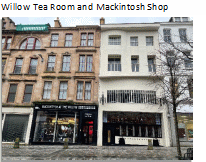
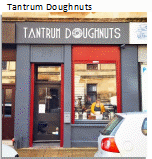
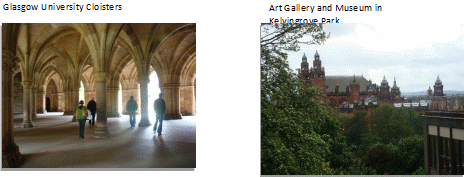
Ayrshire (6)
Ayrshire offers the opportunity of a day trip from Glasgow. Along with several storied golf courses (Royal Troon, Turnberry, Prestwick) there are numerous but excellent less well-known ones. Be prepared to walk and practice your wind game and please play the ball as it lies. The Scots are purists when it comes to golf! Culzean Castle is a magnificent country home. Designed by Robert Adam, a suite in the castle was gifted to Eisenhower for his services during WW II. Obsessed by trivia? – visit the nearby Electric Brae (Electric Brae – Wikipedia). Also close by is Burns Cottage in Alloway, the birthplace of Scotland’s national bard, Robert Burns. More revered in Scotland than William Wallace or Robert the Bruce many of his lines such as “the best laid plans of mice and men …” and songs such as Auld Lang Syne are known globally.
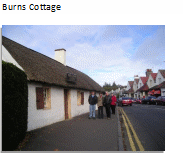
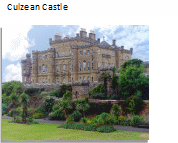
A trip up the Ayrshire coast has great vistas of the Firth of Clyde, picturesque towns and fishing villages (Girvan, Ayr, Prestwick, Troon, Largs etc.) and some excellent fish and chip shops.
There are also some pleasant boat trips from Ayrshire such as to the Isles of Arran or Bute. If you don’t have much time, Great Cumbrae (much smaller than its name suggests) is only a 10-minute ferry ride from Largs. Rent a bike and cycle round it, play the 18-hole golf course with stunning vistas or wander round the small town of Millport. More trips to remoter islands are described below.

The Western Highlands, Part I; Glasgow to Fort William (7)
This is the part of Scotland I consider my back yard. From Glasgow the A82 is typically the route taken. On your way to Loch Lomond, Scotland’s largest loch, you will pass within sight of my childhood home in Mountblow as you see Auchentoshan distillery on your left. It is not one of the renowned or charming distilleries but generally produces a mild lowland dram with the triple wood certainly worth a taste. Not far from the distillery is the town of Dumbarton. If you have time stop at Dumbarton Castle. It guards the entrance to the Clyde River from the Firth of Clyde. It has been an important stronghold in the West of Scotland since the early part of the first millennium. Follow Loch Lomond up towards Fort William stretching your legs at Luss if you need a break.
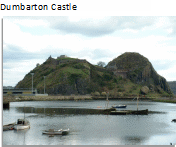
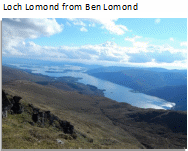
Before Glencoe stop at the Green Welly in Tyndrum for a great bacon roll, Scottish memorabilia that you really don’t need, and petrol (gas). Petrol stations can be few and far between as you get further north.
I love the mountains of the West Coast area and particularly Glencoe valley. I spent my youth here learning to rock climb mainly on Buachaille Etive Mòr (the Big Shepherd of Etive), on your left as you enter Glencoe. Just before the Buachaille you can turn left and drive down Glen Etive by the single-track road to Loch Etive which is a nice side trip. Stop at the Clachaig Inn as you leave Glencoe for something to eat and drink.
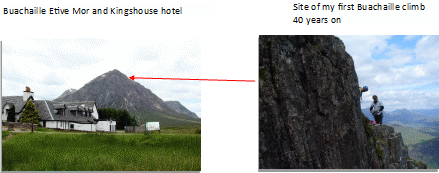
The Islands of the Inner Hebrides (8)
From Glencoe you have lots of options, but I would recommend taking a car ferry at some point to one or more of the Scottish Islands. CalMac (Caledonian MacBrayne) have a good website and generally a very reliable service ( https://www.calmac.co.uk/ ). Have a look and see which of the islands fit your travel plan or interests. Each island has a different character.
One of the best ways to see the islands is by sailboat. Several years ago five friends and I took a five day sailing course from Largs (Sailing School Scotland). Having six gave us the boat to ourselves with a skipper. We had almost no prior experience. The skipper was unbelievable and, within reason, allowed us to decide which islands and distilleries we wanted to visit as he taught us to sail (see Ardberg photo below).
Islay
The “Whisky” island. Home to some of the best distilleries in the world which are generally, but not always, highly peated. Other than the main town (village really) of Port Ellen the island is wild and gives a sense of remoteness.
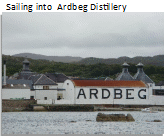

Mull
To me, Mull is more picturesque than Islay, particularly the main village of Tobermory. There are, however, remote areas to lose yourself in. Be sure to visit Iona on the far side of the island. The abbey was the birthplace of Christianity in Scotland.
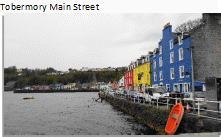
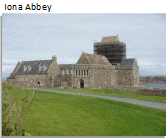
Skye
There is now a bridge to Skye. The scenery is arguably the most dramatic of the islands, but it is very busy at certain times of the year. Some exceptionally good and expensive restaurants beckon for a special occasion such as Loch Bay (Michelin Star) or the Three Chimneys. Visit Dunvegan Castle and the Talisker Distillery (strong and smoky rather than peaty). Taking a walk in the great outdoors is a must do in Skye and you can choose a walk that fits your abilities. Walk to Brothers Point, The Fairy Pools, Kilt Rock, The Old Man of Storr, or the Quiraing. For the very adventurous and experienced ridge walker, the Cuillin ridge is the ultimate. Even if you don’t walk the ridge watch Danny Macaskill mountain bike along it on Youtube (Macaskill Cuillin).
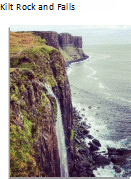
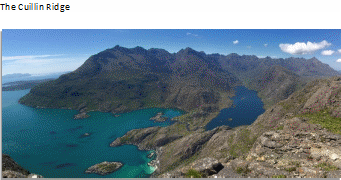
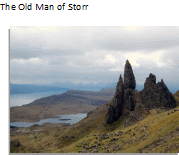

Tours of the Islands
There are day trips to many of the islands if you do not want to stay or take your car. Staffa Tours (Staffa tours from Oban) have a full day one that takes in Mull, Iona and Staffa. Staffa is an uninhabited island with columnar basalt pillars and a huge sea cave (Fingal’s Cave), an inspiration for Mendelssohn when composing his Hebrides Overture.
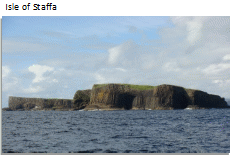
Other Islands and Archipelagoes
There are many other islands and archipelagoes all with their unique character and, depending on your interests, may be to your liking. Tiree (pop. 650) and Coll (pop. 195) are out beyond Mull. Both have beautiful beaches. Tiree boasts 10 hotels and a music festival, and Coll 2 hotels and a golf course. The son of friends of ours is an excellent chef at Coll’s main hotel. I did not see a second hotel, although there is a bunkhouse. The golf course is probably the worst I have played on but also one that was a lot of fun to play, in about a 4-club wind for you golfers out there. There are numerous courses like this in the west of Scotland. I recommend you play one to convince yourself that golf is not designed for beautiful managed parkland on a bright, warm, calm day. Below are photos from our 2019 visit to Coll.
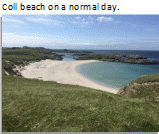
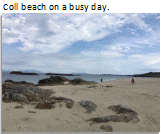
Islands which I have not visited that get good reviews are the Islands of the Outer Hebrides, and those in the far north, Orkney and Shetland, which have a distinct Scandinavian feel thanks to the Vikings. I was meant to be cycling the Outer Hebrides in 2020 but Covid interfered. Maybe soon.
Oban (9)
If you do not have time to visit the remoter parts of the Highlands and Islands from Glencoe, you can head back to Glasgow or Edinburgh via Oban. At Ballachulish take the A828 south. Oban is a nice town to stay, explore, stroll, and eat seafood. If time permits take the long way back to Glasgow through Inveraray (A816/A83). Some of the oldest Celtic monuments, circles and mounds in Scotland are in this area. Check out Kilmartin Glen (Kilmartin Glen). As mentioned above Oban is a good place to make a day trip of the Inner Hebrides. It also has the Oban Distillery which produces a tipple much loved by many of my American friends.
Peninsula and Mull of Kintyre (14)
Kintyre is a large peninsula on the west coast of Scotland. The tip is the Mull of Kintyre, made famous by the eponymous Paul McCartney song with the Campbeltown Pipe Band (Video). In a typical Scottish abundance of caution the band opted for a flat fee rather than a share of the royalties! Campbeltown used to be a major Scotch producing area that is seeing something of a resurgence. Springbank is the oldest distillery. Try its Longrow expression (whiskies do expressions not vintages). Kilkerran and Glen Scotia are the newcomers but still good.
Another great attraction in the area is Machrihanish Golf Course essentially on the Atlantic Coast. One for all you lovers of Pebble Beach.

The Western Highlands, Part II; Fort William to Ullapool (10)
Alternatively, from Glencoe head to Fort William and meander up as far as Ullapool. A nice way to meander is to take the A830 to Mallaig. You pass through Glenfinnan and, yes, the railway bridge may look familiar. Harry Potter passes over the viaduct as the Hogwarts express takes him to school. There are several Harry Potter locations in Scotland if you have children that you are trying to persuade to accompany you (Harry Potter Scottish Film Locations). It is also worth stopping at the Glenfinnan Monument celebrating or commiserating the last of the Scottish uprisings in 1745/6 as we lost (see Culloden below). There are numerous outstanding beaches in Scotland that would feature in the World’s “top” list if the temperature were 20°F warmer. Take time to visit the Silver Sands of Morar when you are in the area. From Mallaig you will need to take the ferry to Skye (see below). You can leave the island by the bridge and head towards Plockton. Stop in Plockton which has palm trees growing on the main street from before global warming, thanks to the Gulf Stream, renamed the North Atlantic Drift before it reaches Scotland. From Plockton heading through Torridon has some great scenery, mountains and walks.
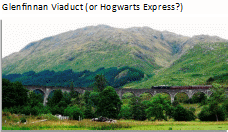
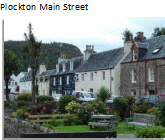
Inverness, Tain and Dornoch (11)
An alternative to the Western Highlands is to head from Fort William to Inverness through the Great Glen. At the far end of Loch Ness stop at Urquhart Castle. Take a cruise to see the Loch Ness monster. If you catch a glimpse of it cut back your consumption of Malt Whisky! Inverness is another lovely wee town to walk around, shop and eat. The site of Culloden, the last battle, fought for Scotland’s independence (referendums aside) in 1746 is not far from Inverness.
If you head North from Inverness on the A9 you will pass through Tain, home to Glenmorangie Single Malt, a fine representative of Highland whiskies, and on to Dornoch. If you are a golfer Royal Dornoch always rates very highly as a links course but, being somewhat out of the way, it is not as convenient as its more southerly competition. It is steeped in history. Old Tom Morris was the original designer and Donald Ross, legendary designer of Pinehurst No. 2, was born in the town and was “keeper of the Greens” for a while before moving to the U.S. It is on my bucket list. At around 58°N it is on a latitude somewhat north of Moscow, which means that you can play golf until around midnight in June. You are in the area now to see the Northern Lights (Aurora Borealis). As they are best seen in the dark, clear skies of winter seeing them in summer may be another sign of needing to cut back on the malts.
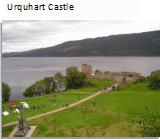

The Cairngorms, Speyside and Royal Deeside (12)
South on the A9 from Inverness will take you to the Cairngorms National Park. This is another great scenic area of Scotland, but the peaks tend to be bit more rounded than those in the west. Aviemore is a center for winter sports but also useful for summer pursuits, particularly hiking. There is no end of hiking opportunities in the Cairngorms. Take the A95 off the A9 and you will pass through or near villages sporting the names of storied Speyside single malts. Pick your personal favorites to visit. A great contrast is to visit the Macallan and Aberlour distilleries. Macallan is a recently modernized, state-of-the-art, impressive operation. The locals call it “Malt Disney” which should tell you something. Aberlour is small and traditional. The tasting is done in a lovely old wood paneled room. Both are close to the village of Craigellachie. Stop at the Copper Dog for lunch to make sure you have something in your stomach before your tours.

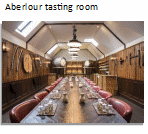
Also in this area are several castles. These fall more into the class of stately homes compared to the military strongholds of Edinburgh and Stirling. The most famous is Balmoral, the Royal family’s Scottish retreat since the time of Victoria. It is open to the public when the Queen is not in residence. Friends of our family were out for a hike near Balmoral when a policeman approached and, respectful of Scotland’s right to roam laws, politely informed them that the resident would appreciate if they would take a route that bypassed the castle. Wisely, they did. Do not mess with the Queen as beheading is probably legal under some archaic law. Other castles in the area include Drum, Braemar, Crathes (the gardens) and Castle Fraser (excellent for dinner but book a reservation).
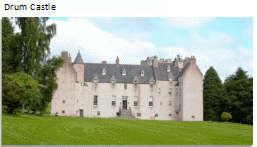
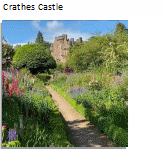
Aberdeen back to Edinburgh (13)
Aberdeen is the third most populous city in Scotland, often referred to as the Granite City based on the use of local granite in many of its buildings that shimmers, particularly after rain. It is also a city from which the Northern Lights can be seen when the conditions are right (see above). Although my sister lives on the outskirts of the city I must admit to visiting the attractions in the previous section when staying with her, spending less time in the city. From Aberdeen it is an easy 2.5-hour drive to Edinburgh or Glasgow. Dunnoter Castle, about 30 minutes south of Aberdeen, is one of my favorites. It is largely a ruin, but its location and atmosphere are special. At Dundee it is worth taking a break and possibly a detour. Visit the Dundee Waterfront to eat and visit the V&A Design Museum and the RSS Discovery from the glory days of Antarctic exploration in the early 1900s. You can take the fast route from Dundee through Perth to Edinburgh or cross the Tay Road Bridge and meander through Fife taking in St. Andrews on your detour if you did not visit it earlier.
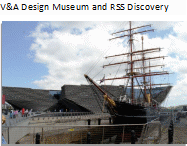
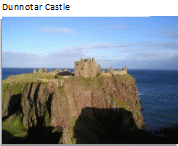
Other Areas of Scotland
The Far North
I have not covered the far north of Scotland which is also well worth a visit. The coastal areas have been incorporated into Scotland’s North Coast 500 Route. Some of its websites are excellent (north-coast-500-planning) and there is some overlap with the places I have described.
Southern Scotland
The Southern Uplands and the Borders areas are less rugged but still has a relatively low population density. It was an area visited by the Romans and fought over with the English, Quaint towns, abbeys and castles abound.
Books worth perusing
The Scottish Nation: A History, 1700 – 2000 by T.M. Devine. Devine is one of Scotland’s premier historians. His books cover a wide range of subjects and periods in Scotland’s development.
Raw Spirit (in search of the perfect dram) by Iain Banks. Great descriptions of malt whisky distilleries as well as road trips round Scotland.
Jim Murray’s Whisky (or Whiskey) Bible (2021 edition available). Published since 2003 this provides the most comprehensive tasting notes of any book I have seen. It includes multiple expressions (the scotch equivalent of vintage) from most distilleries. It also includes whiskies from around the world. There is a North America edition with whiskey spelt with an e. In Scotland whisky is never spelt with an e. Any googlephiles that wishes to dispute this may be factually, but not culturally, correct.
Michael Jackson’s Complete Guide to Single Malt Scotch (7th edition). The other Michael Jackson unfortunately passed away in 2007 but his book was updated in 2015 by knowledgeable disciples. It is a more accessible book to read but no less informative than Jim Murray’s.
I have often been asked what the best Scotch is. They are all good. Some are just a wee bit better. My personal recommendations depend on the time of day: Auchentoshan Triple Wood for breakfast; Glenmorangie for lunch; Macallan pre-dinner; Highland Park with dinner; Talisker post-dinner and Ardbeg Uigeadail late night.
Music
Hopefully during your visit, you will get to hear some traditional Scottish music. For the bagpipes, first on my list would be the massed pipes and drums at the Edinburgh tattoo. Second would be Highland Cathedral, now extremely popular at Scottish weddings. While sounding fully traditional it was composed by two Germans in 1982!
Scottish folk music saw a major revival starting in the 1960s. The Corries were a major force in this movement. Their “Flower of Scotland” has taken on the status of a national anthem. The Bonnie Banks of Loch Lomond is a classic Scottish folk dirge. It tells the tale of two Scotsmen in Carlisle Gaol, in the north of England. One will be released and take the high road home. One will be executed and his soul will take the low road home. Listen to a traditional version (Ella Roberts) or a more boisterous modern version (Runrig), both equally good. Even if the music does not grab you but you get the chance to go to a traditional Scottish Ceilidh with dancing, be sure to go, imbibe and dance.
Final music trivia – Pick up the Pieces by the Average White Band – yes, they are Scottish. If the Germans can do bagpipes, we can do funk.
Final Word
Have fun and stay in touch. Slainte (Cheers in Gaelic – a very useful word to know, pronounced slange).
Acknowledgements
My extended family and friends still living in Scotland provided most of the photos in this guide. Sincere thanks to: Joanne and Kim Black for all the additional photos that made me realize how much of Scotland I still need to see; to Janice and Jenny Kennedy for showing me so much of Aberdeenshire; to Alastair Kennedy for his company on the Buachaille, overcoming his fear of high places; to Lauren Parsons for turning doughut tasting into a gastronomic treat (see her Glasgow artwork at https://etsy.me/36QOXT3); to David Regan with whom I have climbed, hiked, cycled, golfed and kayaked many of the above places from an early age; and to Una Kelly for everything else! To those exiled Scots at SDN thank you for your honest, by which I mean brutal, criticisms and for a constant stream of Scottish humour that has survived many years in foreign lands.


